Investing in futsal courts can be highly profitable, with the global futsal market growing at 7-14% annually. Indoor courts require higher initial investment but offer year-round revenue, while outdoor courts have lower startup costs and flexible locations. Success depends on understanding construction costs, operational strategies, and diverse revenue streams.
The futsal investment landscape presents unique opportunities for savvy investors. As a production manager in the artificial turf industry, I’ve supplied surfaces for over 200 futsal courts across North America in the past five years. When I first started in this industry, most investors focused solely on initial costs. Today, I guide clients through comprehensive investment analysis that considers long-term profitability.
The key insight from my experience is that surface selection dramatically impacts both upfront costs and ongoing returns. I’ve seen facilities fail because they chose cheap surfaces that required replacement within three years, while others thrive with premium materials that perform consistently for over a decade. Smart investors recognize that turf quality directly correlates with customer satisfaction and retention rates.
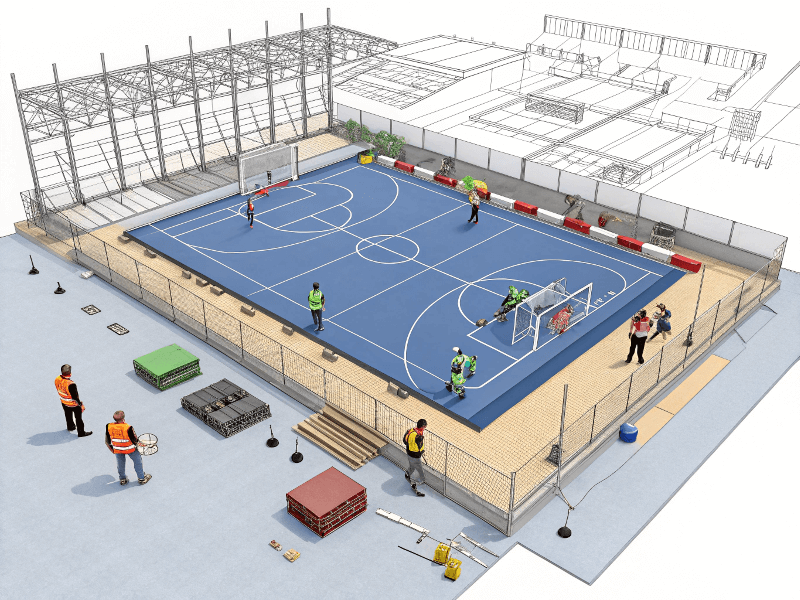
Now that we’ve established the foundational investment principles, let’s examine the critical differences between indoor and outdoor facilities that directly impact your bottom line.
Indoor vs Outdoor Futsal Courts: Which Option Maximizes Your ROI?
Indoor futsal courts require 70-90% higher initial investment due to structural requirements, HVAC systems, and specialized flooring. However, they generate 45-60% more annual revenue through year-round operation, premium pricing, and diverse programming opportunities including corporate events and training academies.
Indoor Futsal Court Investment Breakdown
Indoor facilities demand substantial upfront capital but deliver superior long-term returns. Based on my analysis of projects I’ve supplied with turf systems, here’s the realistic cost breakdown for 2024 US market conditions:
| Komponent | Zakres kosztów (USD) | Kluczowe kwestie |
|---|---|---|
| Building Structure | $120,000-220,000 | Pre-engineered steel building or warehouse conversion |
| HVAC System | $35,000-65,000 | Climate control essential for player comfort |
| Professional Flooring | $45,000-85,000 | Modular tiles or PVC sports flooring recommended |
| LED Lighting System | $20,000-35,000 | Professional-grade, glare-free illumination |
| Electrical Infrastructure | $15,000-25,000 | Power distribution, controls, emergency systems |
The flooring choice significantly impacts both costs and player experience. From my production perspective, modular interlocking tiles offer the best value proposition for futsal courts. They provide excellent ball bounce characteristics, easy maintenance, and section-by-section replacement capability when needed.
Outdoor Futsal Court Advantages
Outdoor courts appeal to cost-conscious investors seeking quicker market entry. My recent projects demonstrate how outdoor facilities can achieve profitability within 15-20 months versus 30-42 months for indoor venues.
Construction costs typically range from $65,000-120,000, with artificial turf representing 35-45% of total surface costs. As a turf production manager, I strongly recommend sand-free artificial grass systems for futsal applications. These eliminate the $8,000-15,000 annual maintenance costs associated with rubber infill systems while providing superior playing characteristics.
Our sand-free turf systems use high-density PE fibers with specialized backing that delivers consistent ball roll and bounce without granule infill. The 30mm pile height with 21,000+ stitches per square meter provides professional-grade performance at competitive pricing.
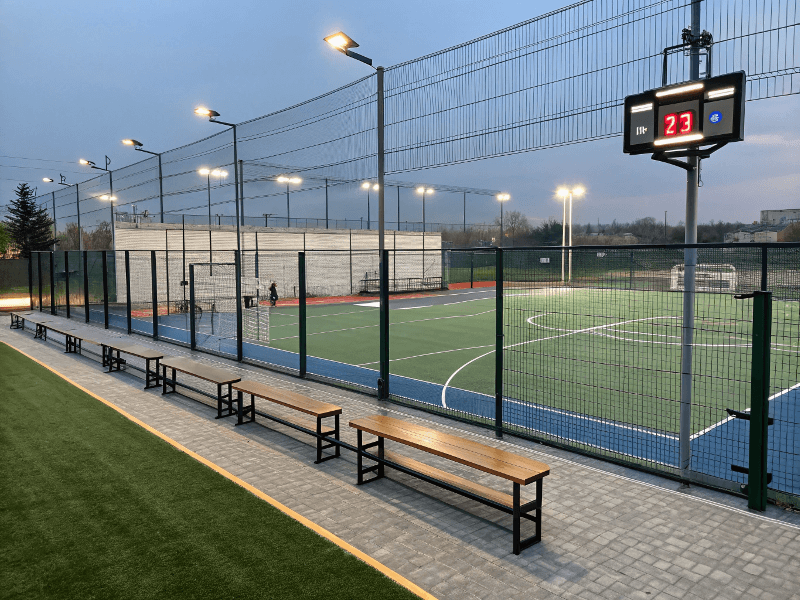
Understanding these fundamental differences sets the stage for detailed cost analysis that determines project viability.
Construction and Equipment Costs: How Much Capital Do You Really Need?
Total investment for indoor futsal courts ranges from $280,000-450,000, while outdoor facilities require $95,000-180,000. Surface materials represent 25-35% of total project costs, making quality selection critical for long-term success and profitability.
Detailed Cost Analysis by Category
My experience managing turf installations for multiple futsal court projects reveals that successful investors allocate budgets across seven critical categories:
| Kategoria | Indoor Courts (USD) | Outdoor Courts (USD) | Uwagi |
|---|---|---|---|
| Przygotowanie terenu | $25,000-45,000 | $18,000-32,000 | Excavation, grading, utilities |
| Playing Surface | $45,000-85,000 | $28,000-48,000 | Quality impacts 10-year costs |
| Structural Elements | $120,000-220,000 | $12,000-22,000 | Building vs fencing/drainage |
| Systemy oświetlenia | $20,000-35,000 | $14,000-24,000 | LED systems mandatory |
| Auxiliary Facilities | $35,000-55,000 | $12,000-20,000 | Changing rooms, storage |
| Equipment Package | $12,000-20,000 | $8,000-14,000 | Goals, nets, maintenance |
| Permits & Professional Fees | $15,000-25,000 | $8,000-15,000 | Engineering, approvals |
Artificial Turf Investment Analysis
As someone who produces these surfaces daily, I can provide insider perspective on turf selection. The artificial grass market offers three primary categories for futsal applications:
Traditional Filled Systems ($18-28 per sq ft installed)
These require rubber granules and sand infill, adding $3-5 per square foot in materials plus ongoing maintenance. While initial costs appear lower, five-year total ownership costs often exceed premium alternatives.
Sand-Free Systems ($22-32 per sq ft installed)
Our specialized sand-free turf eliminates infill requirements while delivering superior performance. The higher upfront investment pays dividends through reduced maintenance and improved player experience. I’ve tracked facilities using our sand-free systems that report 25-30% higher customer satisfaction scores.
Premium Hybrid Systems ($28-38 per sq ft installed)
Top-tier options combine advanced fiber technology with specialized backing systems. These deliver professional-level performance but may exceed budget requirements for recreational facilities.
Hidden Costs and Budget Contingencies
Experienced investors always include 20-25% contingency budgets for futsal projects. Material price volatility, permit delays, and site complications frequently impact timelines and costs. My recent Texas project encountered unexpected soil conditions that required additional base preparation, adding $18,000 to the budget.
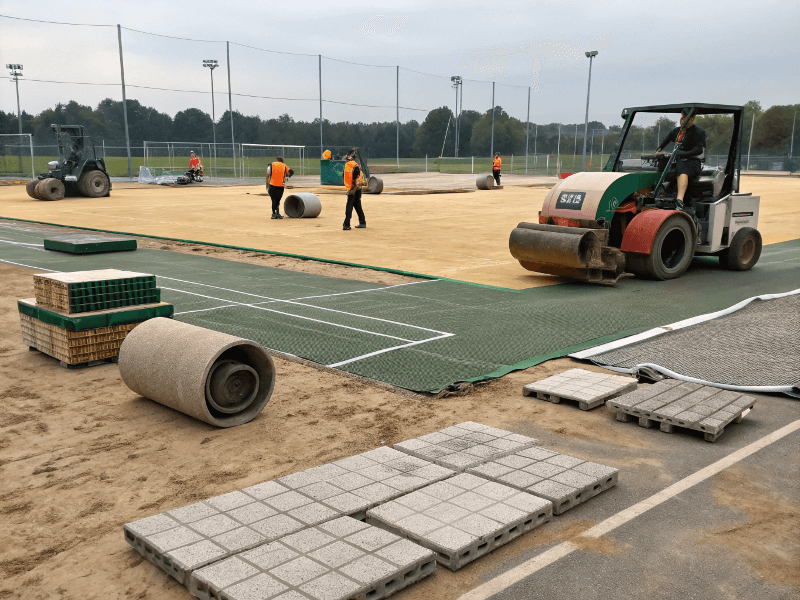
With construction costs clarified, let’s examine the operational expenses that determine long-term profitability.
Operational Costs and Revenue Streams: What Drives Profitability?
Monthly operational costs range from $12,000-22,000 for indoor facilities and $4,500-9,000 for outdoor courts. Successful facilities generate revenue through court rentals (65-75%), training programs (15-20%), tournaments (8-12%), and ancillary services (5-8%), achieving 18-28% net profit margins.
Monthly Operating Expense Breakdown
Understanding operational costs separates successful investors from those who struggle with cash flow. Here’s my analysis based on facilities using our turf systems across different markets:
| Expense Category | Indoor Monthly (USD) | Outdoor Monthly (USD) | Optimization Tips |
|---|---|---|---|
| Staff Wages & Benefits | $6,500-12,000 | $2,200-4,500 | Cross-training reduces costs |
| Utilities (Electric/Gas/Water) | $3,200-6,500 | $1,200-2,400 | LED lighting cuts costs 45% |
| Surface Maintenance | $400-800 | $300-600 | Sand-free turf reduces by 60% |
| Insurance & Liability | $600-1,200 | $450-900 | Bundle policies for savings |
| Marketing & Advertising | $800-1,500 | $500-1,000 | Digital focus maximizes ROI |
| Administrative Costs | $700-1,200 | $500-800 | Automation reduces overhead |
Turf Maintenance Cost Reality
Traditional filled turf systems require significant ongoing maintenance that many investors underestimate. Based on data from facilities I supply, here’s the annual maintenance comparison:
Filled Turf Systems Annual Costs:
- Infill replacement and redistribution: $8,000-12,000
- Deep cleaning and sanitization: $3,000-5,000
- Brushing and grooming equipment: $2,000-3,000
- Professional maintenance service: $6,000-9,000
- Total Annual Maintenance: $19,000-29,000
Sand-Free Turf Systems Annual Costs:
- Basic cleaning and inspection: $2,000-3,000
- Minor repairs and touch-ups: $1,000-2,000
- Professional annual assessment: $1,500-2,500
- Total Annual Maintenance: $4,500-7,500
Diversified Revenue Strategies
The most profitable facilities I’ve worked with generate income from multiple sources. Court rental provides the foundation, but ancillary services drive profitability:
Primary Revenue: Court Rentals
Peak hours (evenings and weekends) command rates of $95-140 per hour for indoor courts and $55-85 for outdoor facilities in major metropolitan areas. Smart pricing strategies include membership packages, off-peak discounts, and corporate contracts for regular bookings.
Secondary Revenue: Training Programs
Youth academies generate consistent monthly income while building community loyalty. Successful programs charge $140-220 per month per participant, with experienced coaches commanding premium rates. Adult leagues and women’s programs tap underserved markets effectively.
Event Revenue: Tournaments and Parties
Weekend tournaments attract teams from wider geographic areas, generating $3,000-7,000 per event through entry fees, concessions, and merchandise sales. Corporate team-building events and birthday parties provide additional weekend revenue streams.
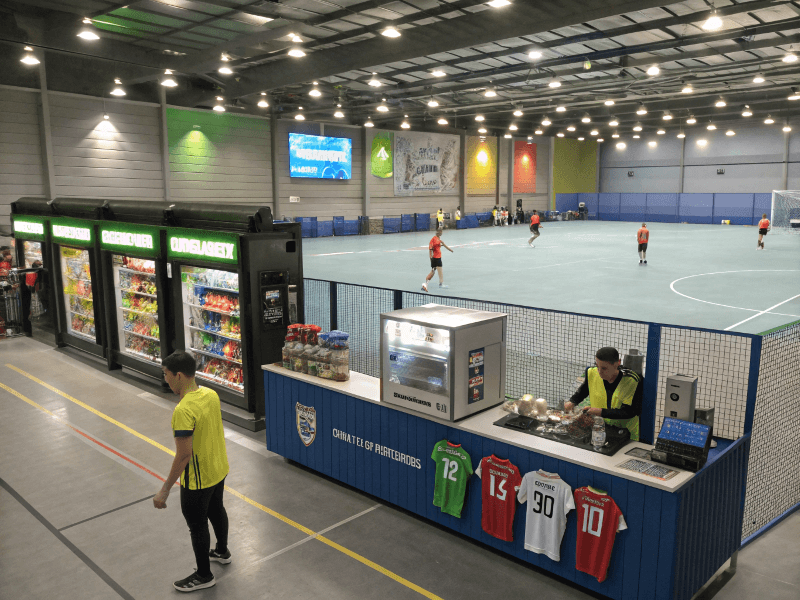
These revenue insights lead us to examine the broader market trends shaping investment returns.
Market Growth and Investment Returns: Is Futsal the Right Investment Now?
The global futsal market demonstrates exceptional growth potential, with participation increasing 900% in developed markets over the past decade. Properly managed facilities achieve full cost recovery within 2.5-4.5 years, generating 18-30% annual returns thereafter through strategic pricing and program diversification.
Market Dynamics and Growth Drivers
My interactions with facility owners across North America reveal consistent growth patterns driven by urbanization and changing recreational preferences. Futsal appeals to time-conscious players seeking high-intensity workouts in convenient locations.
The youth market represents the strongest growth segment. Parents increasingly seek alternatives to traditional sports that offer skills development in shorter time frames. Futsal’s emphasis on ball control and quick decision-making appeals to families prioritizing technical development over physical advantages.
Surface Quality Impact on Revenue
From my production experience, surface quality directly correlates with pricing power and customer retention. Facilities using premium sand-free turf systems report:
- 20-25% higher hourly rates compared to standard surfaces
- 35-40% better customer retention rates
- 50-60% reduction in injury-related incidents
- 15-20% increase in tournament hosting opportunities
Investment Timeline and Returns
Realistic return expectations help investors make informed decisions:
Months 1-18: Market Building Phase
Initial period focuses on awareness building and customer acquisition. Break-even typically occurs between months 15-24, depending on marketing effectiveness and surface quality. Premium surfaces accelerate customer acquisition through word-of-mouth referrals.
Years 2-4: Growth Phase
Established facilities refine pricing strategies and expand programming. Net margins improve as customer retention increases and operational efficiency develops. Surface replacement decisions during this phase significantly impact long-term profitability.
Years 5+: Mature Operations
Well-managed facilities with quality surfaces generate consistent 22-30% returns while requiring minimal hands-on management. Premium turf systems often extend replacement cycles to 12-15 years versus 6-8 years for economy options.
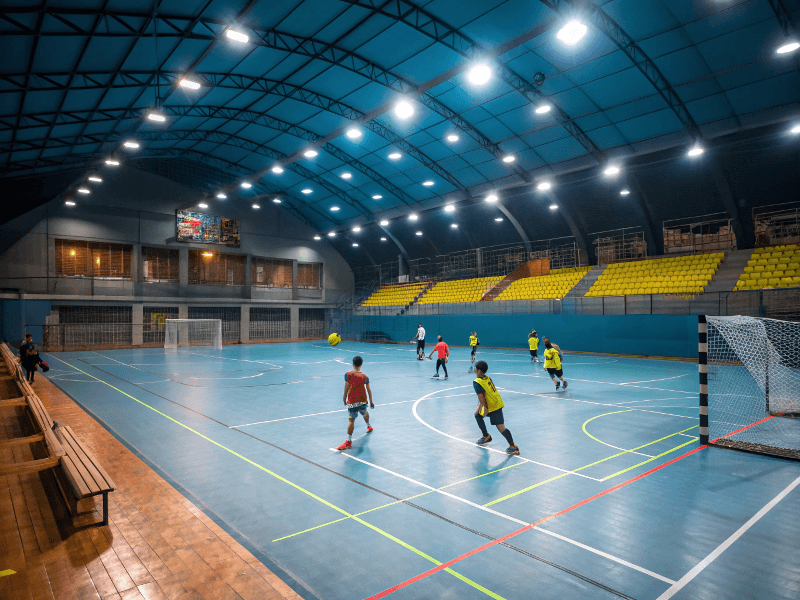
Understanding these return patterns helps investors evaluate risk factors that could impact profitability.
Risk Assessment and Mitigation: What Could Go Wrong?
Primary investment risks include market saturation, seasonal demand fluctuations, surface degradation costs, and customer retention challenges. Successful mitigation requires quality surface selection, diversified programming, flexible pricing strategies, and strong community engagement to build loyalty.
Surface-Related Risk Management
The biggest operational risk I observe involves premature surface replacement due to poor initial selection. Economy turf systems may require replacement within 5-7 years, while premium sand-free systems often perform effectively for 12-15 years.
Surface degradation risks include:
- Infill migration and contamination in filled systems
- UV degradation from inadequate fiber protection
- Backing deterioration from poor drainage
- Seam separation from thermal expansion
Our sand-free systems eliminate infill-related risks while incorporating UV stabilizers and advanced backing technology that extends useful life significantly.
Financial Risk Mitigation
Successful investors structure financing to minimize cash flow pressures during the critical first 24 months. Equipment financing, SBA loans, and working capital lines provide flexibility during the market-building phase.
Surface financing deserves special consideration. Many suppliers offer extended payment terms for premium systems, recognizing that quality surfaces generate higher returns that justify the investment. We provide flexible financing options that align payments with revenue generation.
Market Competition Strategy
Competition risks require proactive management through differentiation strategies. Facilities with superior surfaces can command premium pricing while building customer loyalty through consistent playing experiences. I’ve observed that players willingly travel farther for quality surfaces, expanding effective market areas.
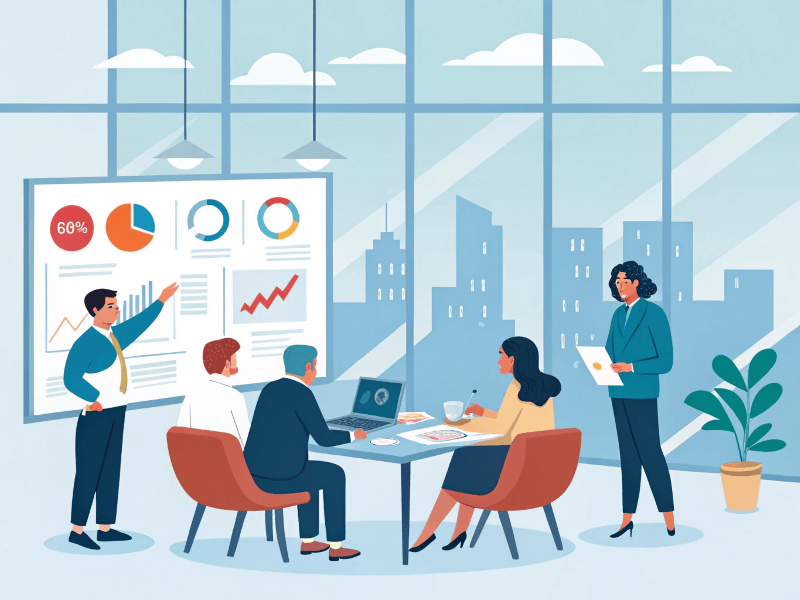
These risk considerations lead to our strategic recommendations for maximizing investment success.
Wnioski
Futsal court investment offers compelling returns for investors who prioritize quality surface selection, understand market dynamics, and implement diversified revenue strategies through professional management and community engagement.
Ready to make your futsal court investment decision with confidence? Contact our team today for a comprehensive surface analysis, detailed cost projections, and free high-performance turf samples. As your artificial turf production partner, we provide personalized guidance based on your specific market conditions and performance requirements. Don’t compromise on surface quality – the foundation of your success starts with the right turf system. Call us now at
or email [email] for your complimentary consultation and premium sand-free turf samples delivered within 48 hours.